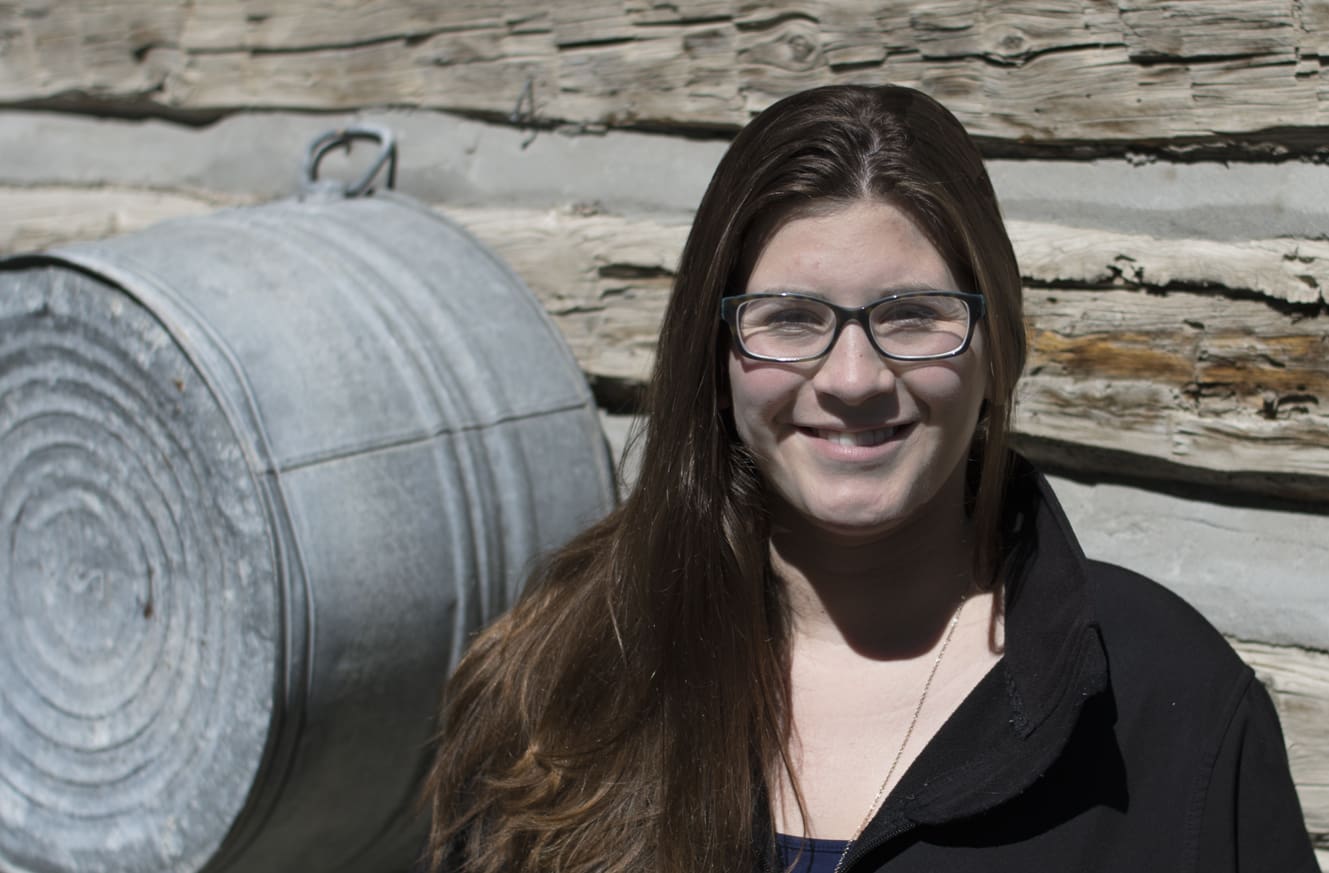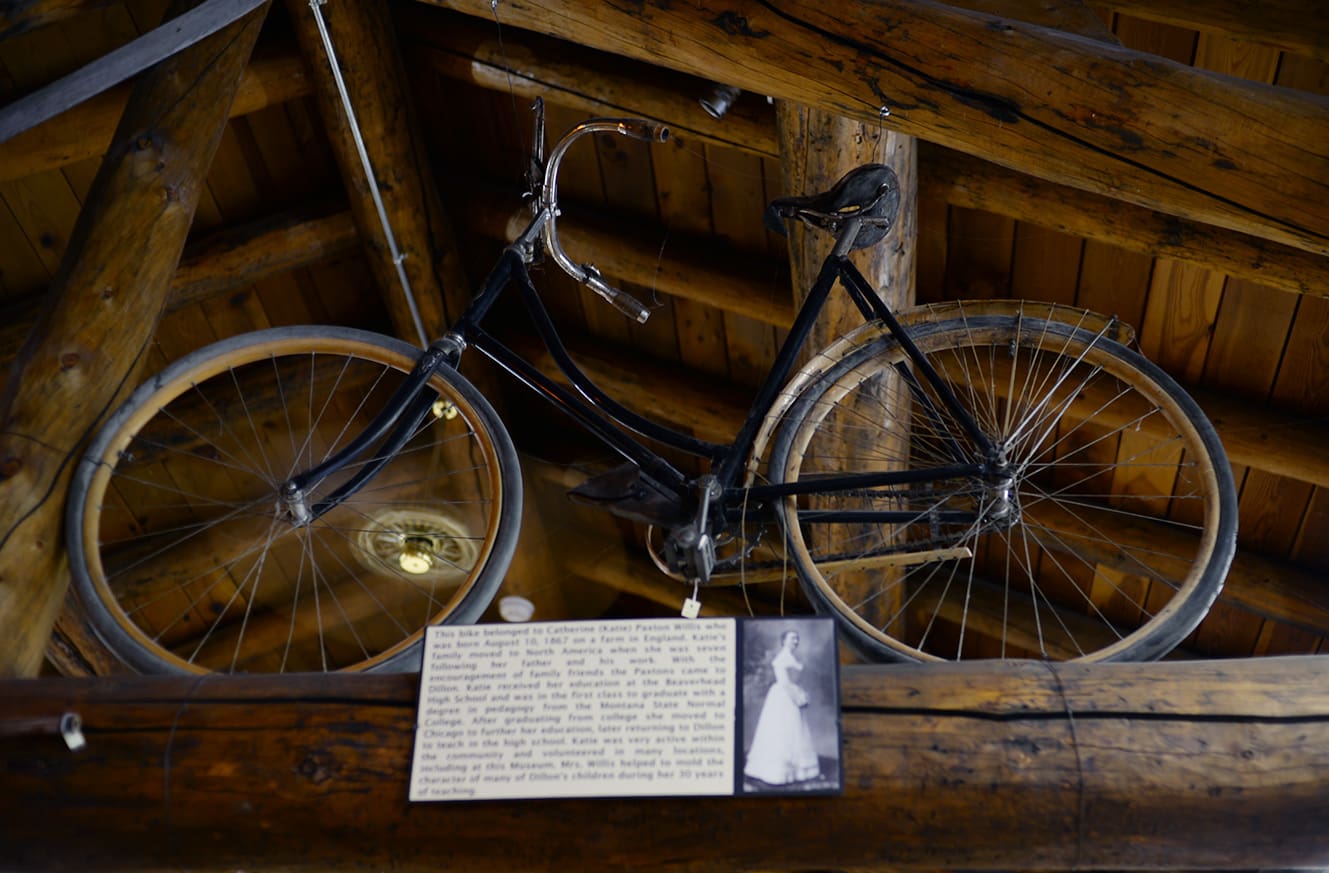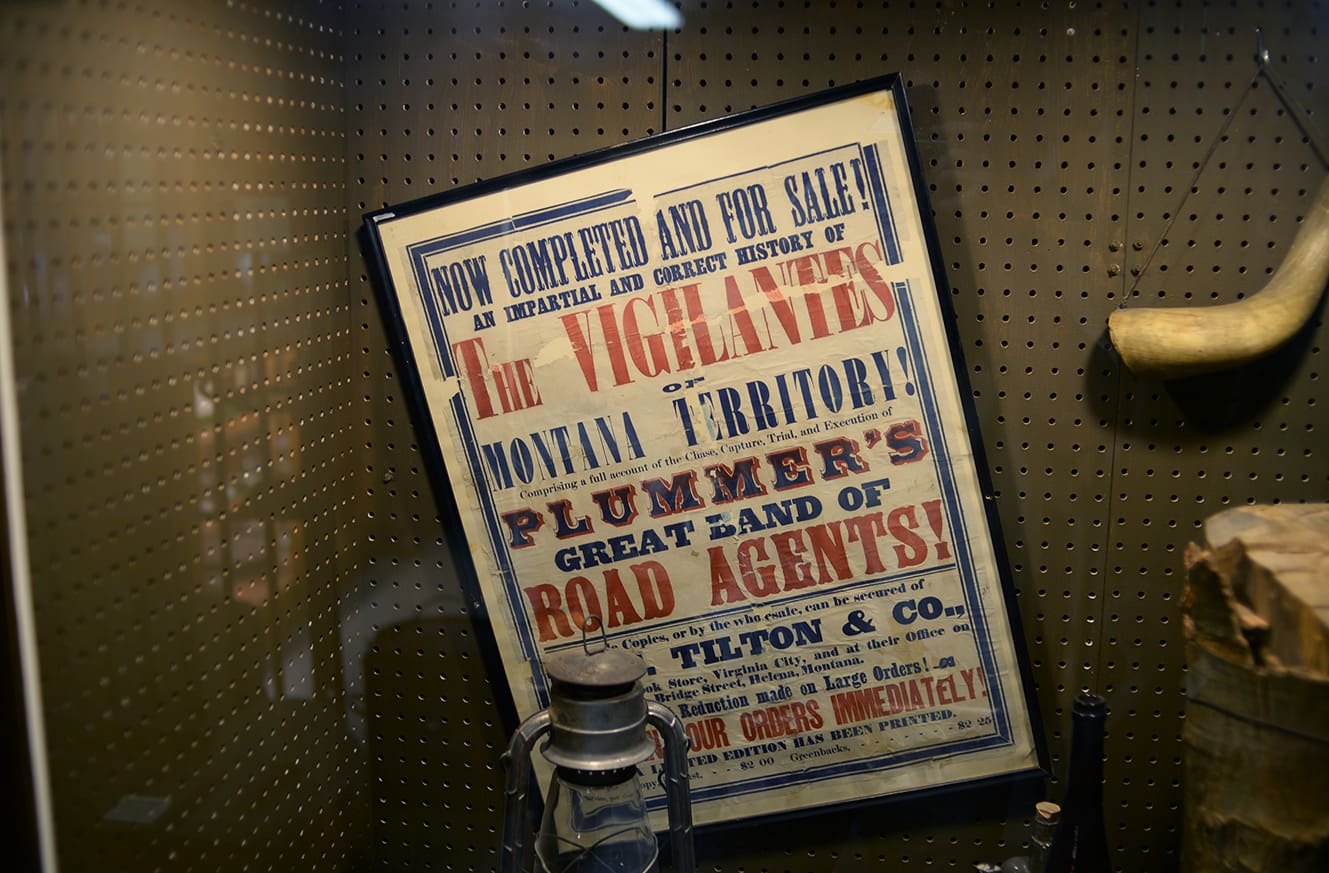July 21, 2017
Kailey Judisch is keeping the past alive at her summer internship with the Beaverhead County Museum.

Elfreda Woodside was the first director at the Beaverhead County Museum. In the museum, she has her own glass display. It features a portrait and various personal items like an old mirror and her flight goggles; her husband was the first pilot in Dillon, Mont..
A black-and-white photo of her at the dedication on March 19, 1950 in “Beaverhead County” by Stephen C. Morehouse shows the museum looking much like it does today, deer heads adjacent to the fireplace, glass display cases, wood paneling on the walls.
Along with the displays, the museum is almost an artifact itself. The rustic look of the building lends to the experience and enhances the feeling that this place is a portal through time.
An enormous stuffed bear greets patrons at the front door, standing erect with claws outstretched and teeth bared. Deeper in the museum there is a carriage attached to a full-scale horse mannequin. It’s shocking how small the carriage actually is, how skinny the spokes are.
The most terrifying section of the museum is an old dentist’s chair, complete with a set of barbaric tools. At a quick glance, the rust can easily be mistaken for blood.

In the back, there is a full general store. This is where Kailey Judisch has been doing most of her work as an intern. Her task is to catalogue the items and enter them into a program called Past Perfect, a popular software for museum curators and employees.
The general store showcases glass bottles of Dillon Beverages, sodas which were once manufactured in town. Horse hair coats and wide-eyed dolls share space with boudoir mirrors and Mrs. Stewart’s Liquid Bluing, an ancient form of laundry detergent.
Judisch said the clothing in the general store particularly interests her: “They have these weird lace up boots; the calves are so tiny I don’t know how people fit in them.”

Professor Erin Zavitz helped Judisch receive the internship at the Beaverhead County Museum, and it’s a perfect fit. Judisch has wanted to be a museum curator since she was young.
I asked her when she became fascinated with museums: “My dad always took me to museums when I was traveling on the swim team, and I’ve always loved history. I actually had a job at my hometown museum. I did everything there.”
Her hometown is Conrad, Mont., and she worked at the Conrad Transportation and Historical Museum while she was in high school. It focuses on old automobile memorabilia and even has an old gas station on display.
Displays are important to Judisch; she believes a good museum curator knows how to display things so that they come to life. In her opinion, this separates the museum experience from videos and pictures that can be seen online. I agree, there is something special about sharing a physical space with these artifacts, being able to smell the leather of an old saddle for example.
Judisch decided to come to Montana Western because it was an easy transition from the small town she grew up in: “My cousin Skyler and my cousin Will go here. We’ve always lived in a small-town. Conrad has less than 3,000 people. I went to a small high school, graduated with 37 kids.”
On the block schedule she said, “You have more one-on-one with the teacher. Internships are a lot easier to find with a small group of people. I feel like you have a bit more opportunities.”
Working at the museum has given Judisch the opportunity to learn a lot about who visits museums and what interests them, information that will be very helpful to her when she becomes a curator.
On the patrons of the museum, she said, “It’s a lot of traveling people. Usually its families and elderly people who come in. A lot of people are really interested in the native american books and artifacts. The vigilante display is also popular.”
The tale of the Montana Vigilantes is one of the most famous stories from Southwest Montana History. It involves millions of dollars worth of gold, bandits, a sheriff who may or may not have led a gang called the “Innocents,” and a whole lot of hangings. It’s easy to see why it’s so popular.

Finally, I asked Judisch what fascinates her about history. She said, “We get to know how people lived, how they thought. That’s important.”
That’s what’s different about the Beaverhead County Museum compared to the famous museums in big cities. Those large institutions focus on legendary figures and epic events, but a lot of the Beaverhead County Museum is about regular people and their everyday lives. It’s a much more intimate look at the past. Big museums capture history like a landscape, whereas small museums like this one shoot close-ups. They both produce beautiful snapshots of the past and are equally as valid and fascinating.
The Beaverhead County Museum is located at 15 S. Montana St. in downtown Dillon.